
Drafting the Two-Piece Body Pattern and One-Piece Sleeve
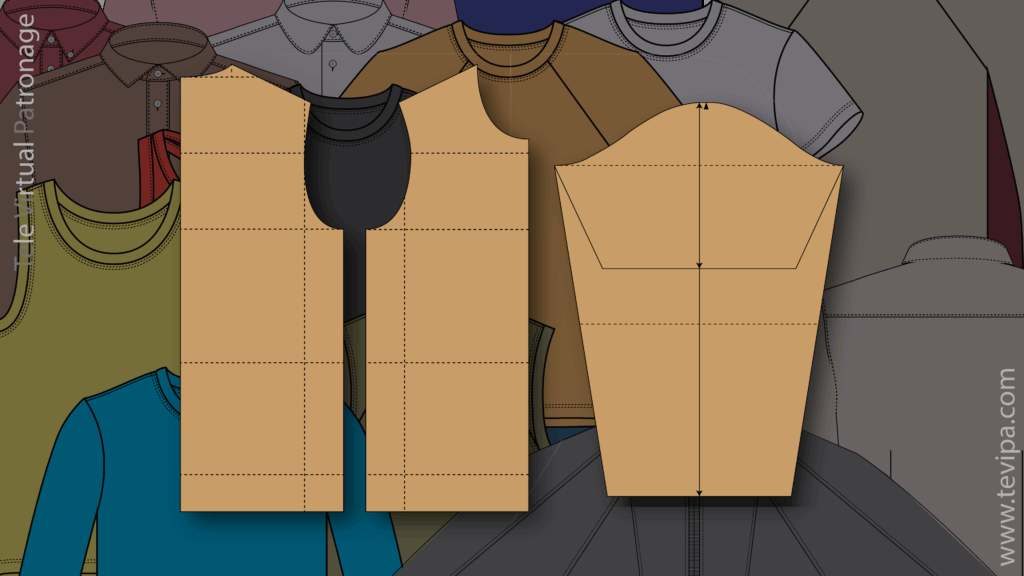
The Two-Piece Body Pattern and One-Piece Sleeve is one of the least anatomical, since it does not closely follow the body’s natural shape.
The front and back pieces are considered practically identical, without adapting to the relief of the sternum. When working with stretch fabrics, this pattern becomes the basis for most garments that fit closely to the body.
It is also the main reference for knitwear.
Among the most common examples are T-shirts and sweatshirts.
Measurements and Reference Points
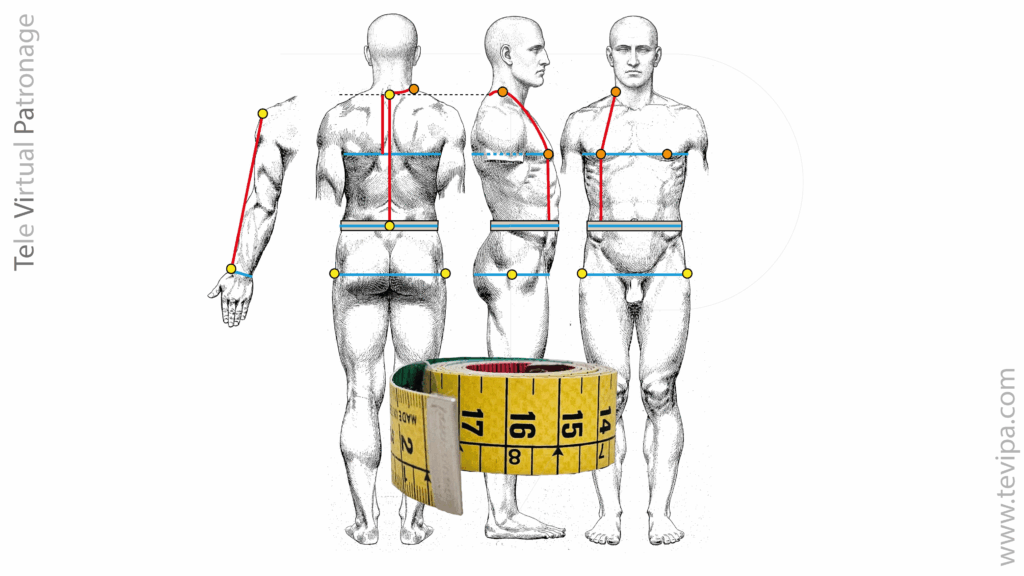
This pattern requires a series of specific measurements, taken from internal and external points of the human body, along with the use of the fitting waistband.
In the list of measurements below, you will find links to explanatory videos to better understand each reference point:
- Half chest or breast girth
- External point: Nipple
- Half waist girth
- Internal point: Fourth lumbar vertebra
- Half hip girth
- Internal points: Greater trochanter
- Internal points: Buttock tip or point of it, birth of the penis
- Scye depth or armhole length
- Internal point: Seventh cervical vertebra
- External points: Nipple, tip neckline
- Nape to waist back
- Internal points: Seventh cervical vertebra, fourth lumbar vertebra
- Fitting waistband
- Nape to waist Front
- Internal points: Seventh cervical vertebra, fourth lumbar vertebra
- External point: Nipple
- Fitting waistband
- Hip length
- Fitting waistband
- Internal points:Greater trochanter
Many of these measurements can be deduced from the main one: the half chest girth
The basic required measurements are the half chest girth and the nape to waist back
Video: Drafting the Two-Piece Body Pattern and One-Piece Sleeve
Here you can watch the full video, divided into three parts:
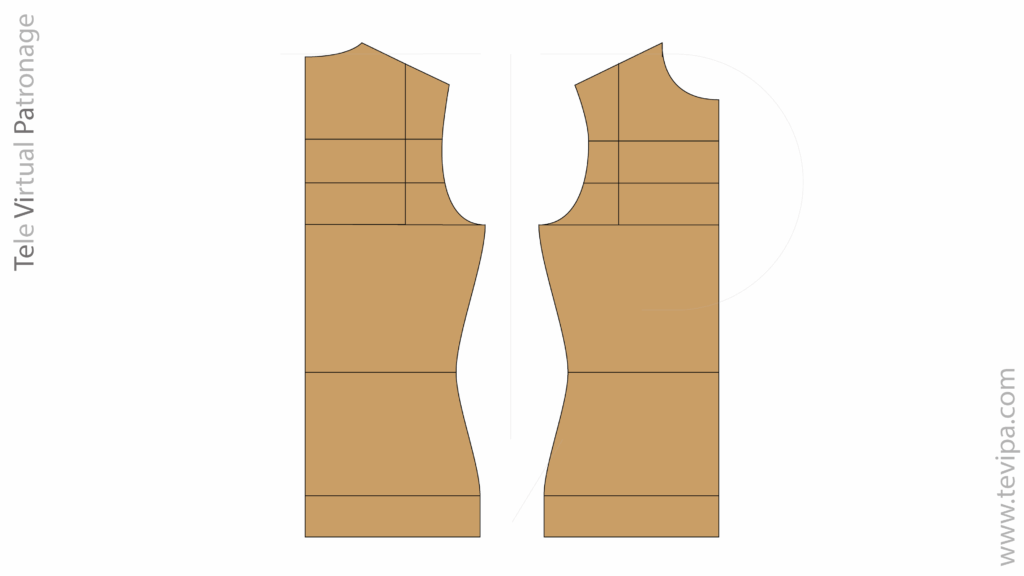
- Initial draft without ease – how to obtain the base pattern.
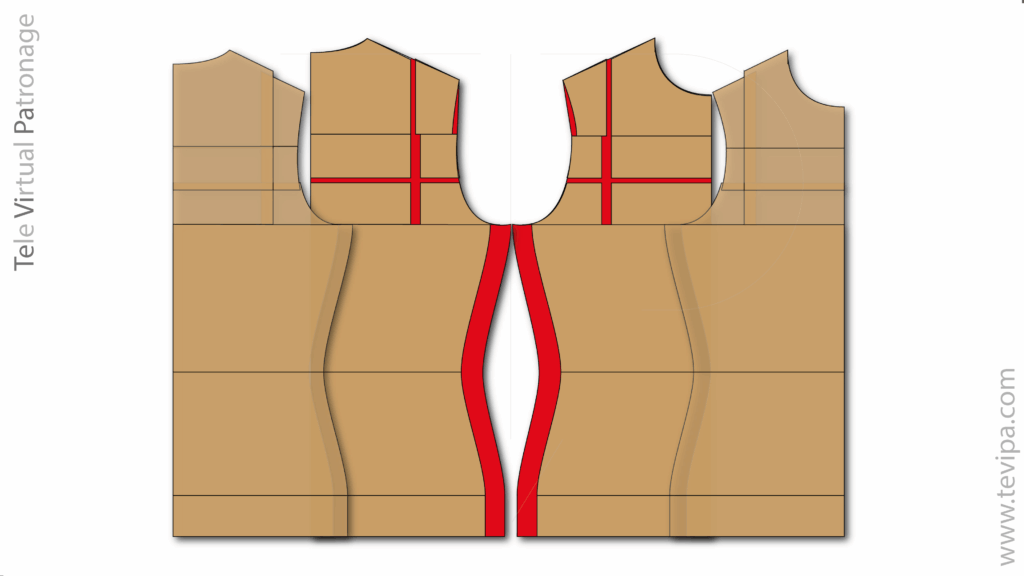
- Use of ease – application of positive or negative ease depending on the type of garment.
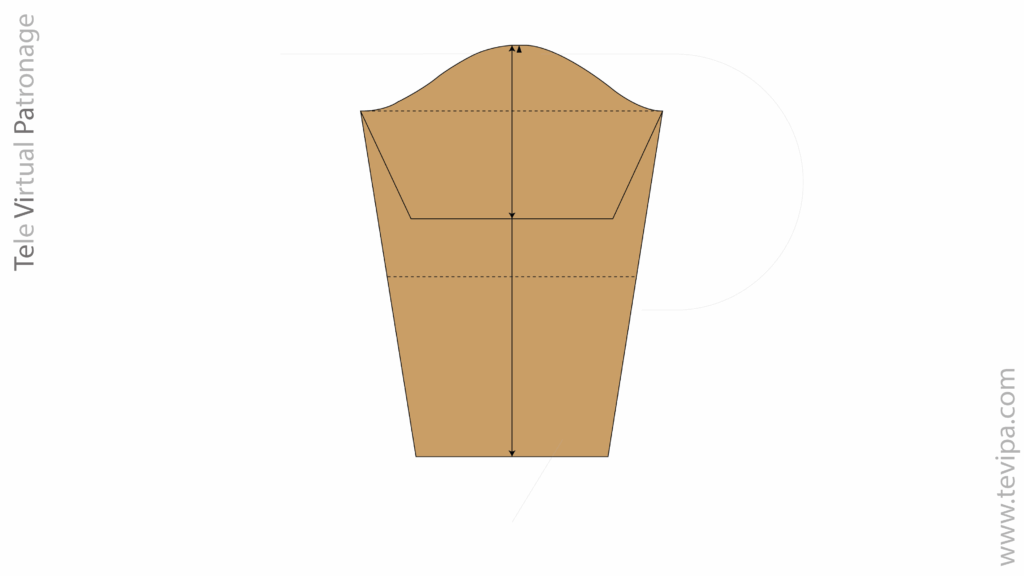
- Drafting the sleeve – construction of the one-piece sleeve for the body pattern
Upcoming Content
In future posts we will explore how, starting from this pattern, you can develop various garments (shirts, T-shirts, sweatshirts, etc.) and their grading for different sizes.